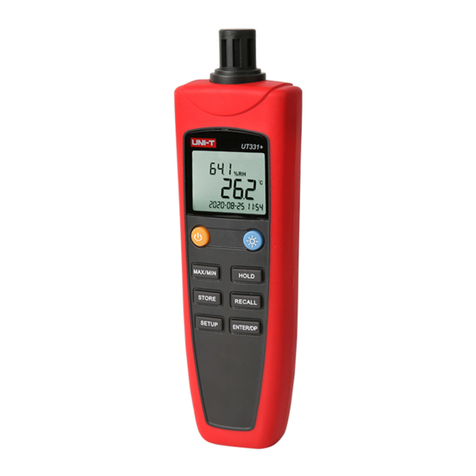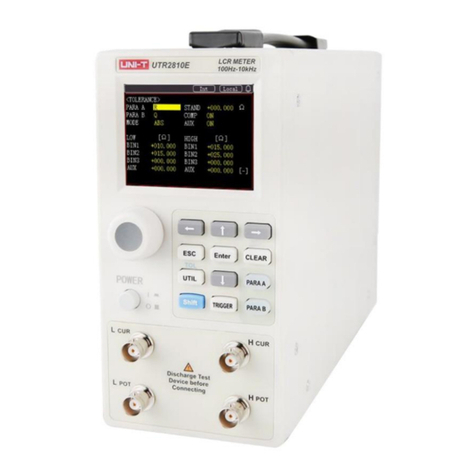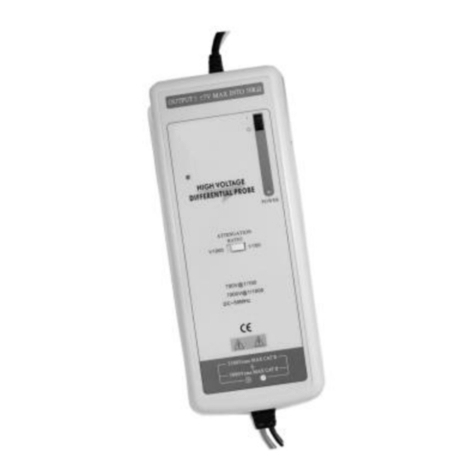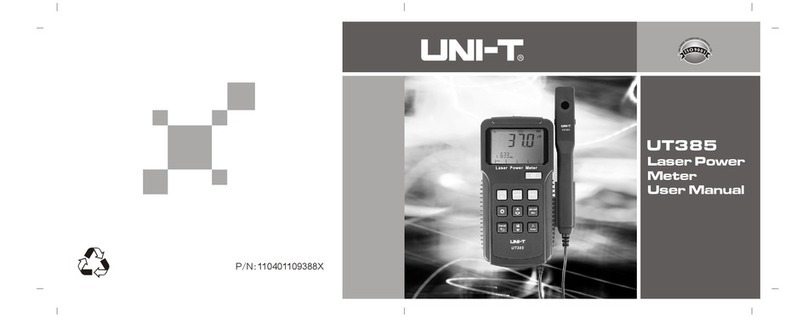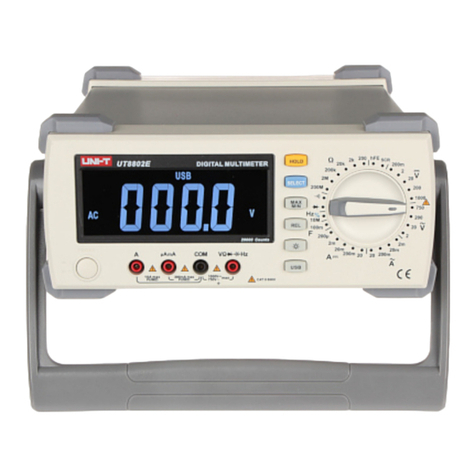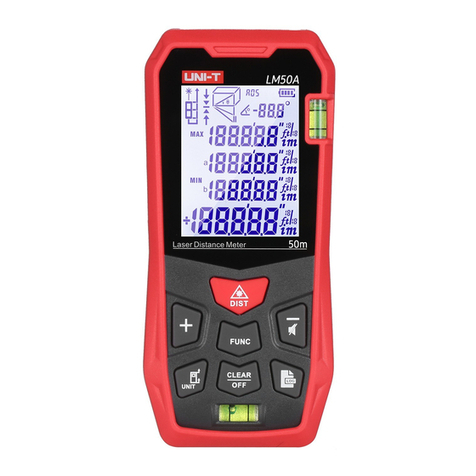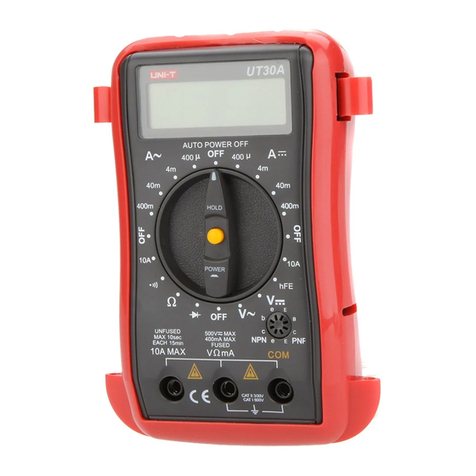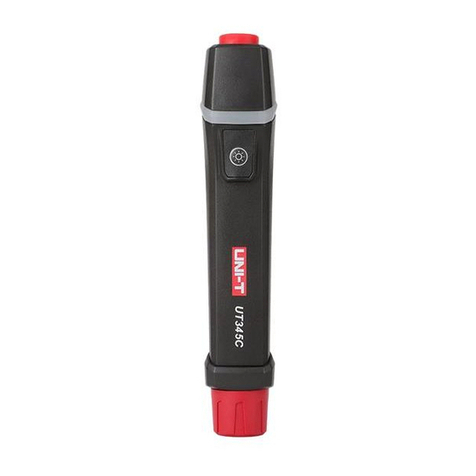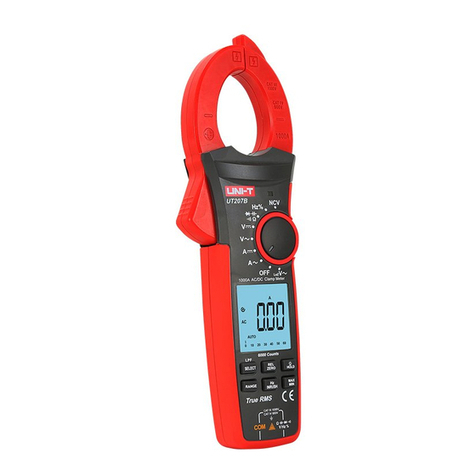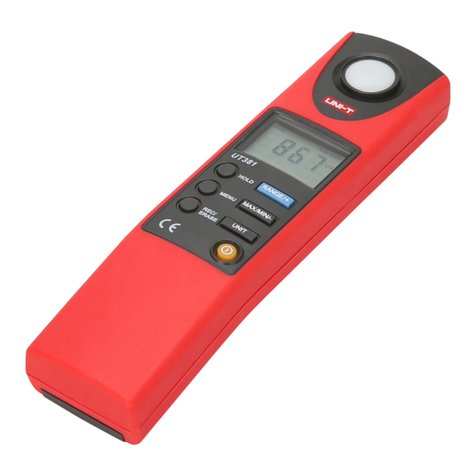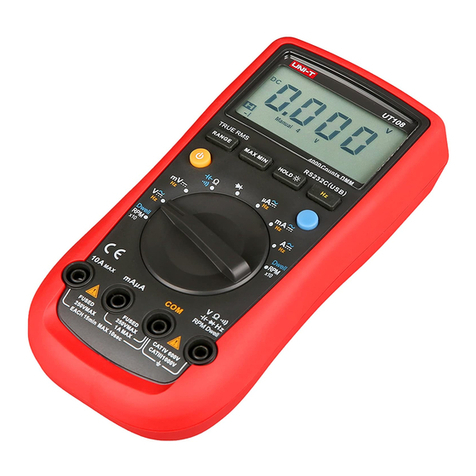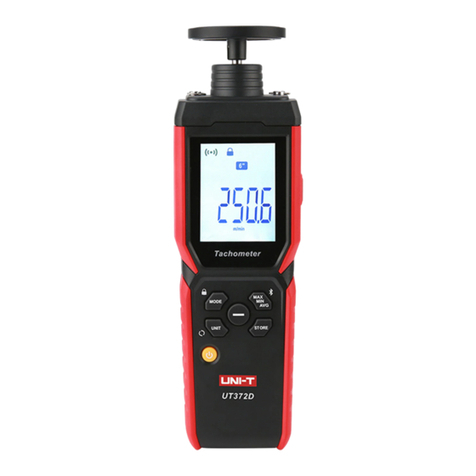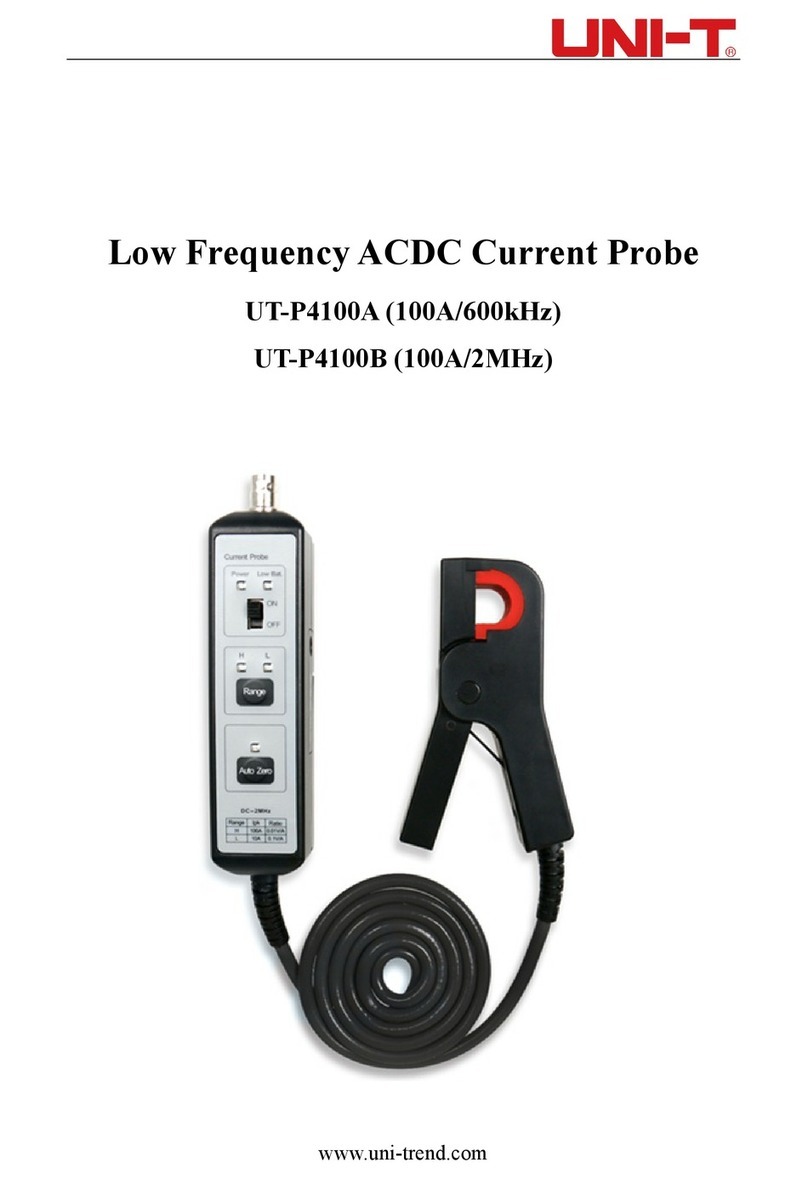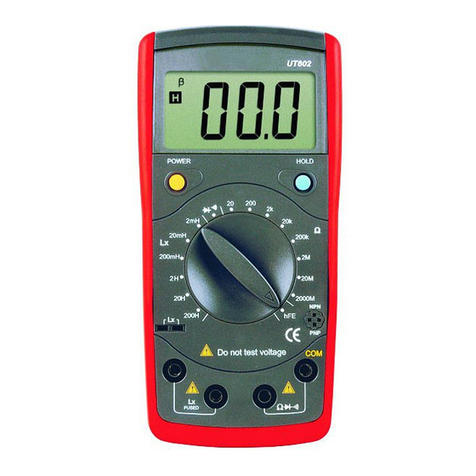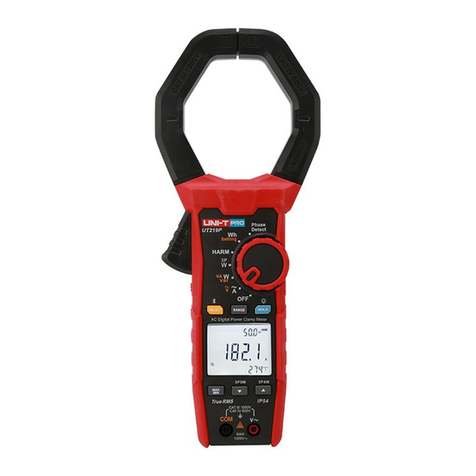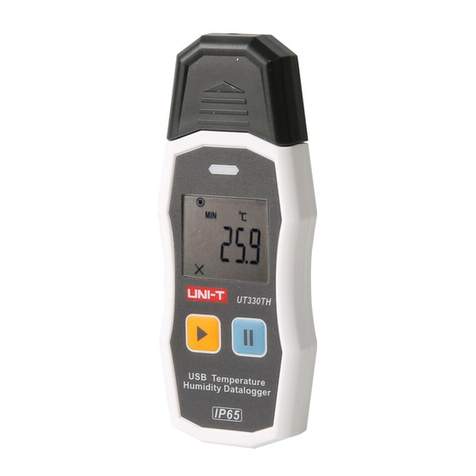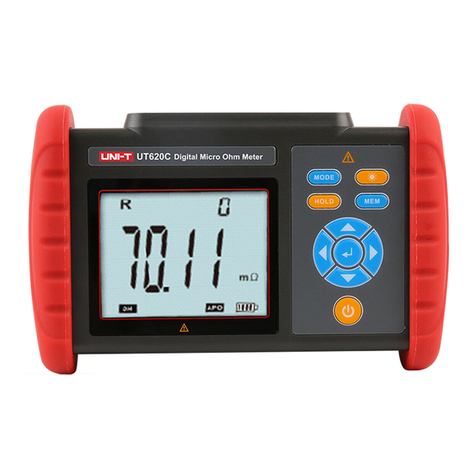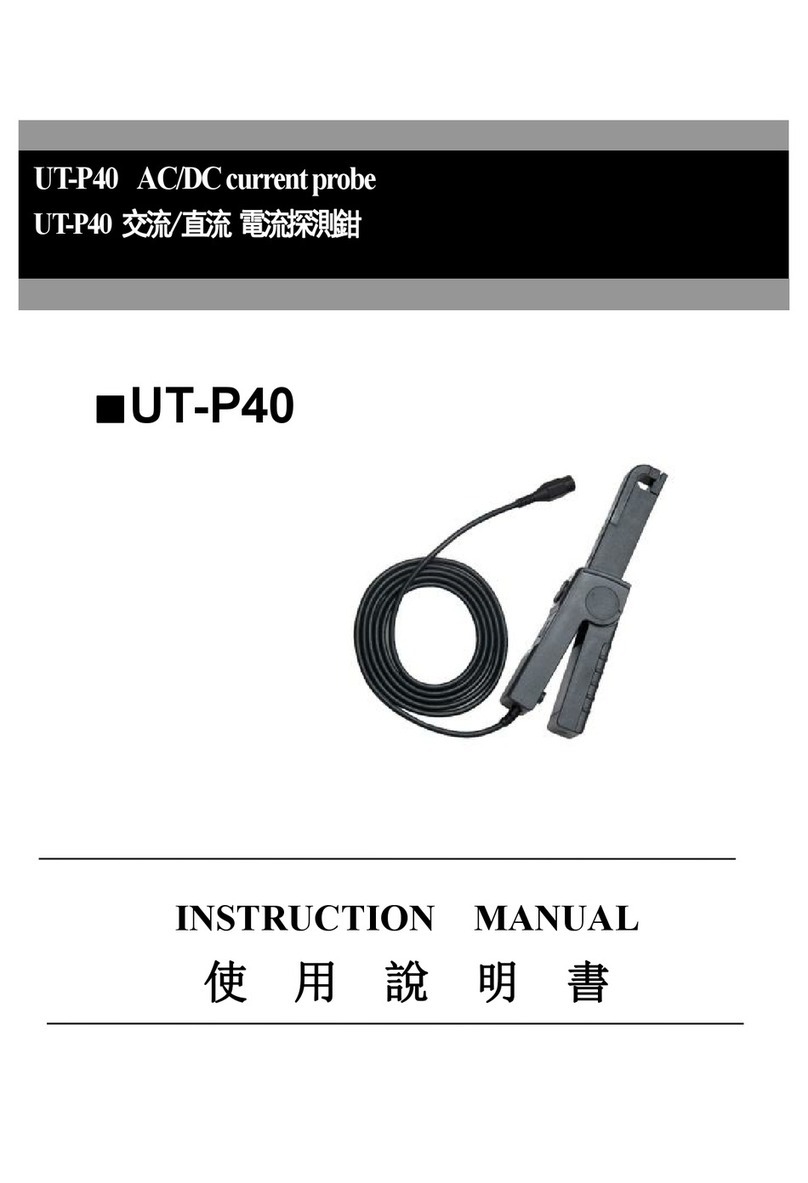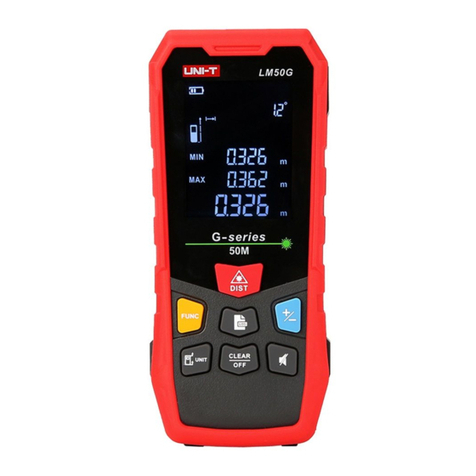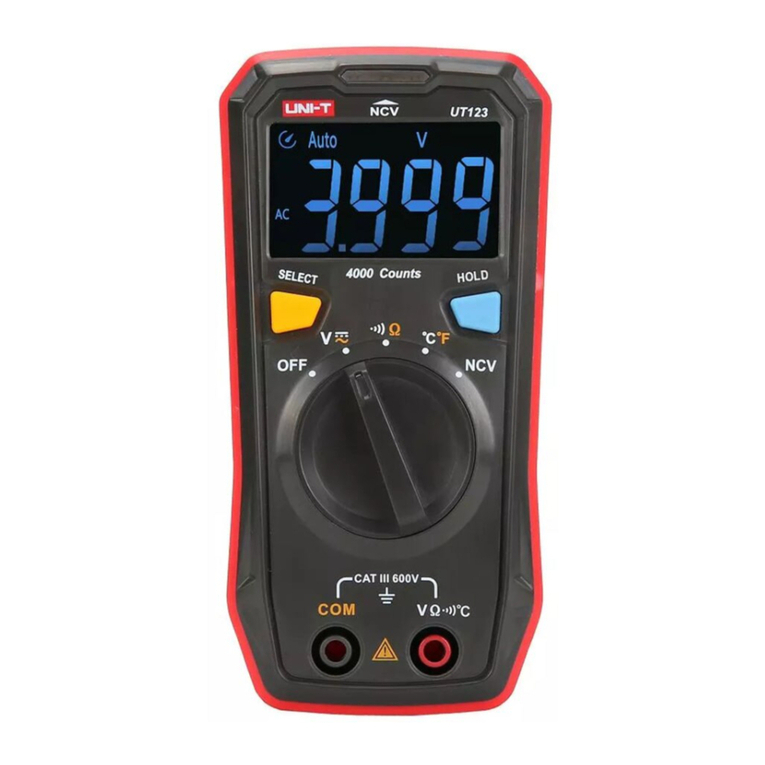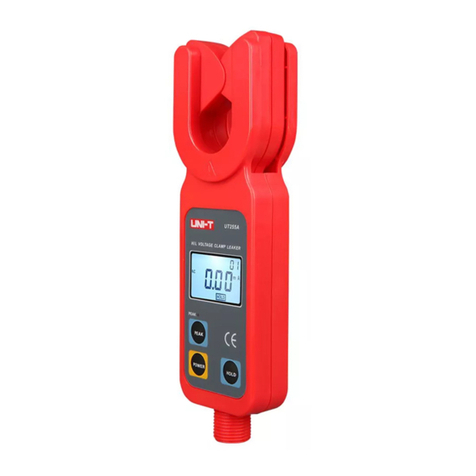
1. Things to Know
Welcome to use UTS1000 Series Handheld Spectrum
Analyzer produced by Uni-Trend Technology (China)
Limited! After unpacking, please check and review
articles inside packing case by following steps below, and
please read Section “Notes before Power-on” prescribed in
this Manual before use, so as to find problems as early as
possible to prevent the occurrence of accidents. When you
find problems, please contact with us, and we will solve
them as soon as possible.
Brief Introduction of UTS1000 Series
Handheld Spectrum Analyzer
UTS1000 Series Handheld Spectrum Analyzer has high-
brightness 6.5 inch screen, with clear pictures, gorgeous
and dynamic appearance, small volume, and light weight,
convenient and easy to carry; it adopts large-capacity
rechargeable battery, which enables it continuously to
work up to 4 hours; it has man-machine interface similar
to desk-type spectrum analyzer; it is of technical parameters
better than mainstream portable spectrum analyzer, suitable
Main characteristics of product:
for tests conducted indoors, outdoors and in other
conditions. This product is able to display testing images
by remote control through PC after connecting to PC.
Adopt general USB, LAN communication interface,
convenient for your measuring and using; adopt standard
and perfect SCPI command set provided to rapidly establish
and upgrade integrated test system.
zWith mainstream portable spectrum analyzer’s test
functions and better technical parameters.
zFrequency range: 9kHz ~ 3.6GHz
zOptimal sensitivity: -158dBm
zResolution bandwidth: 1Hz ~ 3MHz (continuous stepping
from 1 to 10)
zAM/FM/USB/LSB audio demodulation, frequency
counting
z6.5 inch high-brightness VGA color display screen
z6000mAH lithium battery to supply power, continuous
service time: 4 hours
zGeneral USB, LAN, easy for control
zHumanized PC upper computer measuring software
zDimension: 288mm×182mm×142m
zWeight: not more than 2.8kg
87623(5$7,1*0$18$/
1












